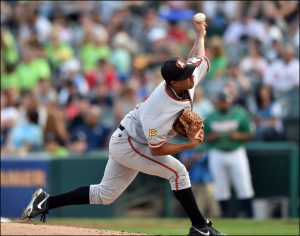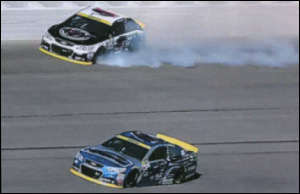Outlast Your Opponent: Strengthen Your Weak Link
 Competitive sports place supra-physiologic loads on the shoulder. Just by simply raising the arm up from the side of the body to reach overhead, 2the rotator cuff is encountering a force nearly equivalent of one’s own body weight due to bio-mechanical forces across the shoulder joint. In extraordinary stressful events such as power lifting, the rotator cuff may face up to more than 7 times body weight. Elite baseball pitchers may experience a distraction force of over 200 pounds in the shoulder after the ball is thrown. Professional male tournament slalom water skiers being towed by the boat passing around the buoy at 36 mph can generate an acceleration speed of over 70 mph while the shoulder has to resist a nearly 4g amount of force.
Competitive sports place supra-physiologic loads on the shoulder. Just by simply raising the arm up from the side of the body to reach overhead, 2the rotator cuff is encountering a force nearly equivalent of one’s own body weight due to bio-mechanical forces across the shoulder joint. In extraordinary stressful events such as power lifting, the rotator cuff may face up to more than 7 times body weight. Elite baseball pitchers may experience a distraction force of over 200 pounds in the shoulder after the ball is thrown. Professional male tournament slalom water skiers being towed by the boat passing around the buoy at 36 mph can generate an acceleration speed of over 70 mph while the shoulder has to resist a nearly 4g amount of force.
Movement of the shoulder is the summation of coordinated effort of 2 muscle groups:
- The power group , (such as the deltoid )
- The stabilizing group (the rotator cuff muscles)
In order to have efficient and effective shoulder movements, both muscle groups must work in harmony.
 Shoulders can blow out just like race cars an skid out. Although the race car has a very powerful engine, failure occurs due to inadequate gripping tires. In the shoulder, likewise, injuries happen due to muscle imbalance and mismatch. The large power group overwhelms the smaller rotator cuff muscles while resisting an external load such as power lifting ; or when generating speed, such as pitching, that the rotator muscle is not able to maintain stability of the shoulder joint. The shoulder subluxates just like the car skids. Ligaments are torn, tendons are wrecked, and post-traumatic arthritis eventually sets in. Oftentimes, however, injury in the shoulder is not sudden nor catastrophic but minor and repetitive that is cumulative over time.
Shoulders can blow out just like race cars an skid out. Although the race car has a very powerful engine, failure occurs due to inadequate gripping tires. In the shoulder, likewise, injuries happen due to muscle imbalance and mismatch. The large power group overwhelms the smaller rotator cuff muscles while resisting an external load such as power lifting ; or when generating speed, such as pitching, that the rotator muscle is not able to maintain stability of the shoulder joint. The shoulder subluxates just like the car skids. Ligaments are torn, tendons are wrecked, and post-traumatic arthritis eventually sets in. Oftentimes, however, injury in the shoulder is not sudden nor catastrophic but minor and repetitive that is cumulative over time.
Since the power muscles are significantly stronger than the stabilizing rotator cuff muscles, the point of first failure occurs at the weaker smaller rotator cuff muscles. A chain is only as strong as its weakest link. The weak link in the shoulder is the rotator cuff. In competitive events that involve repetitive shoulder motion, when the rotator cuff fatigues, the entire shoulder becomes inefficient and tired. This is a set up for injury.
An injury to the shoulder is bad news for the athlete. The Achilles heel of the shoulder is the rotator cuff. It behooves all competitive athletes to strengthen their weakest link in the shoulder — the rotator cuff.